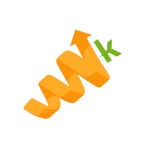AI-Generated UGC Contests: How to Scale Social Proof at 44% Lower Cost
When Dunkin’ Donuts launched its AI-powered UGC contest in 2025, it wasn’t just experimenting with new technology; it was rewriting the playbook for scalable social proof. The results? A 57% surge in mobile app downloads and a campaign ROI that left traditional contests in the dust. This wasn’t magic; it was the strategic application of AI-generated content that maintained authenticity while delivering unprecedented scale.
AI-generated UGC contests represent a shift in how brands create and curate user-generated content. When marketers leverage artificial intelligence to generate, optimize, and distribute contest entries, they can achieve results that were previously impossible and expensive. The technology has matured to the point where AI-created content maintains the raw, authentic feel of organic UGC while delivering the consistency and scale that modern campaigns demand.
Key Takeaways
- Compared to traditional UGC, AI-generated UGC contests are quicker and cheaper to make. Marketers also have full control over the messaging and creatives.
- AI-generated UGC videos cost $198/video, and brands can save 90% on AI-generated content.
- Marketers can implement AI-generated UGC videos in three phases: Phase 1: set goals. Phase 2: select your platform and tools. Phase 3: generate and optimize content.
- Always disclose the use of AI-generated content to maintain trust among your audience.
- There are several tools that marketers should use when creating AI-generated UGC, such as visual and creative generators and avatar creators.
- Marketers should measure several KPIs, such as engagement rates.
- AI-generated UGC content will become more sophisticated as this technology evolves, such as text-to-video generation.
TABLE OF CONTENTS:
What Are AI-Generated UGC Contests?
Traditional UGC contests rely entirely on human participants to create content—a process that’s often slow, unpredictable, and resource-intensive. AI-generated UGC contests flip this model by using artificial intelligence to either create contest entries directly or assist participants in generating higher-quality submissions. These tools can mimic the tone and style of real UGC videos and other content types, but marketers can create this content quicker and have complete control over the messaging and creatives.
The technology works through several mechanisms:
- AI avatar creation: Platforms generate realistic human-like presenters using synthesized voices and expressions.
- Automated content generation: AI creates videos, images, and copy that mimics authentic user-generated content.
- Thoughtful curation: Machine learning algorithms filter and rank submissions based on engagement potential.
- Dynamic personalization: AI tailors contest prompts and rewards to individual user preferences.
The primary aspect that distinguishes AI UGC from traditional methods is its scalability. Where traditional contests might generate dozens of entries over weeks, AI-powered systems can produce thousands of variations in hours while maintaining brand consistency and compliance standards.
Performance Metrics That Matter
The advantages of AI-generated UGC contests become clear when examining 2025 performance data. Production costs have plummeted to an average of $198 per AI-generated UGC video, representing a 44% year-over-year decline that’s democratizing access to high-quality content creation. As a result, brands can save 90% on content creation expenses.
| Metric | Traditional UGC Contests | AI-Generated UGC Contests | Improvement |
|---|---|---|---|
| Average Production Cost | $350-$1,000 | $198 | 44-77% reduction |
| Content Creation Time | 4-12 hours | 45 minutes | 85-95% faster |
| Engagement Rate Lift | Baseline | 25-35% higher | Significant improvement |
| Weekly Content Output | 5-10 pieces | 25+ pieces | 400% increase |
These improvements aren’t just theoretical — real brands are seeing transformative results. A Shopify beauty products store that deployed AI-powered video generation tools saw its weekly contest posts increase from 5 to 25, a 400% rise, while cutting production costs by 65% and reducing time for each post from 4 hours to 45 minutes.
“The breakthrough isn’t just in cost savings. It’s in the ability to maintain authentic engagement at scale. AI-powered UGC filtering delivered a 25-35% lift in engagement rates for brands on TikTok and Instagram in 2025, proving that technology can enhance rather than replace human connection.”
This 25-35% engagement lift represents a shift in how audiences interact with AI-generated content. The technology has evolved beyond the uncanny valley, creating content that resonates authentically with target demographics.
Strategic Implementation Framework
Successful AI-generated UGC contests follow a structured approach that strikes a balance between automation and human oversight. The most effective campaigns integrate AI tools strategically rather than replacing human creativity entirely.
Phase 1: Setting Goals
Start with clear, measurable objectives. Dunkin’s success stemmed from its laser focus on app downloads, which allowed it to create location-specific contest prompts that directly supported its business goals. Define whether you’re optimizing for brand awareness, conversions, or engagement, then select AI tools that align with these priorities.
Phase 2: Platform and Tool Selection
Different AI platforms excel at different content types. For video-heavy campaigns, tools like MagicUGC and Arcads offer robust avatar creation and brand consistency features. For testimonial-focused contests, platforms like Yotpo provide automated review collection and display capabilities. The key is matching tool capabilities to your specific content requirements and budget constraints.
Phase 3: Content Generation and Optimization
AI content generation follows a script-to-output pipeline that requires careful engineering of prompts to ensure effective output. Detailed prompts, such as “Gen Z female lifestyle influencer reacting enthusiastically to a sustainable skincare routine, vertical TikTok format, natural lighting,” yield significantly higher-quality outputs than generic requests.

Compliance and Authenticity Best Practices
The rapid adoption of AI-generated UGC contests has raised important questions about authenticity and disclosure. Smart brands are getting ahead of these concerns by implementing transparent AI strategies that build trust rather than erode it.
Transparency Protocols
Leading platforms now require clear labeling of AI-generated content. This isn’t just about compliance, it’s about building trust. Brands that openly acknowledge their use of AI while showcasing real customer stories behind the technology consistently outperform those attempting to hide their AI usage.
Quality Assurance Integration
Successful campaigns blend AI efficiency with human oversight. Professional UGC management ensures that AI-generated content maintains brand alignment and cultural sensitivity. This hybrid approach allows brands to scale while preserving authenticity and avoiding potential PR issues.
Platform Compliance
Different social platforms have varying policies around AI-generated content. TikTok’s evolving guidelines require constant monitoring to avoid demonetization, while Instagram’s policies focus on disclosure requirements. Generative AI consulting can help navigate these complex requirements while maximizing campaign effectiveness.
Tools and Technology Stack
Creating AI UGC contest requires several specialized platforms, each with distinct strengths:
- MagicUGC ($249/month): Offers advanced Brand DNA Scanners for tonal consistency and human-like avatar creation.
- Arcads: Specializes in TikTok-optimized content with 22% higher effectiveness than traditional branded content.
- Yotpo ($15/month): Focuses on testimonial automation and review-based contests.
- Creatify: Provides cost-efficient visual content generation at $0.03 per image.
The selection process should prioritize API compatibility with existing marketing stacks, multilingual support for global campaigns, and real-time moderation features to maintain brand safety.
Measuring Success and ROI
AI-generated UGC contests require new frameworks for measuring KPIs that account for both efficiency gains and engagement quality. Traditional metrics, such as cost-per-acquisition, remain important, but successful campaigns also track content velocity, brand safety scores, and authenticity perception ratings.
The most successful brands establish clear benchmarks before launching their UGC contests. GoPro’s AI-powered adventure challenges now generate 50% of their marketing videos through AI-curated UGC, effectively doubling their content output without additional human resources. This scalability becomes a competitive advantage in crowded markets.
The Future of AI-Powered Social Proof
The trajectory for AI-generated UGC contests points toward even greater sophistication and accessibility. Emerging technologies, such as text-to-video generation and blockchain verification, will address current limitations in content authenticity and contest fairness.
By 2026, predictive analytics will enable contests that adapt in real time based on participant behavior and market conditions. AI content creation tools are evolving toward full campaign automation, where brands input high-level objectives, and AI handles everything from content generation to performance optimization.
AI-Generated UGC Content Will Become the Norm
If your brand is hosting a contest, you can create the style and feel of UGC with AI tools. Traditional UGC strategies were unpredictable, slow, and expensive. AI-generated UGC contests offer many benefits, making this tactic a necessity for brands.
The key to a successful UGC contest strategy is striking a balance between automation and human involvement. Even though AI is scalable and quicker than human participants, brands must be transparent about their use of automation in UGC.
Collaborate with the leading content marketing agency to develop an AI-driven UGC strategy that delivers measurable results while upholding brand authenticity and compliance standards.
Ready to turn those jaw-dropping AI UGC results into your competitive advantage before everyone else catches on?
Frequently Asked Questions
-
How do AI-generated UGC contests differ from traditional user-generated content campaigns?
AI-generated UGC contests utilize artificial intelligence to either create contest entries directly or assist participants in generating higher-quality submissions, rather than relying entirely on human participants. The technology enables brands to produce thousands of content variations in hours through AI avatar creation, automated content generation, and smart curation algorithms. Since brands are relying on technology, UGC made with AI is more cost-effective than with influencers.
While AI can replicate the style of UGC, it may lack the emotional depth that humans offer. Even though traditional UGC takes longer to produce, this content may resonate more powerfully with your audience.
-
What kind of cost savings can brands expect from AI-generated UGC contests?
AI-generated UGC contests can reduce production costs by 44-77% and save 90% on content creation, with average costs dropping to $198 per video compared to $350-$1,000 for traditional contests. Brands also see 85-95% faster content creation times and can increase weekly content output by up to 400%.
-
What are the key phases for implementing an AI-generated UGC contest strategy?
Start with Phase 1: Define clear, measurable objectives and map your target audience. Move to Phase 2: Select AI platforms that match your content requirements and budget. Complete with Phase 3: Generate content using detailed prompt engineering and maintain quality through human oversight.
-
How can brands maintain authenticity while using AI-generated content?
All marketers should have AI guidelines to ensure all content still holds emotional depth. Always maintain human oversight and conduct audience mapping to personalize messaging for specific segments.
Implement transparency protocols by clearly labeling AI-generated content and openly acknowledging AI usage while showcasing real customer stories. Blend AI efficiency with human oversight through professional UGC management to ensure brand alignment and cultural sensitivity.
-
Which AI tools are most effective for UGC contests?
MagicUGC ($249/month) offers advanced Brand DNA Scanners and avatar creation, while Arcads specializes in TikTok-optimized content with 22% higher effectiveness. For testimonial-focused campaigns, consider Yotpo ($15/month) for review automation and Creatify for cost-efficient visual content at $0.03 per image.
-
Which metrics should brands track to measure AI-generated UGC contest success?
Track traditional metrics like cost-per-acquisition alongside content velocity, brand safety scores, website traffic, ROI, UGC submission volume, social media engagement, and authenticity perception ratings. Successful campaigns also monitor engagement rate lifts (typically 25-35% higher) and weekly content output increases.
-
What does the future hold for AI-powered UGC contests?
By 2026, predictive analytics will enable contests that adapt in real time based on participant behavior and market conditions. Emerging technologies, such as text-to-video generation and blockchain verification, will address authenticity concerns. At the same time, AI tools continue to evolve toward full campaign automation, encompassing everything from content generation to performance optimization.



